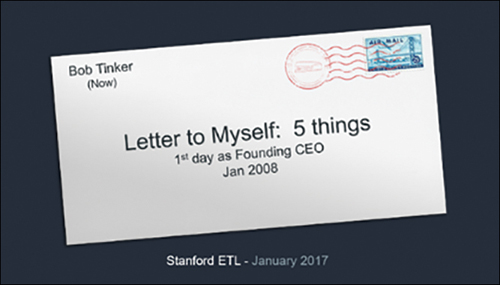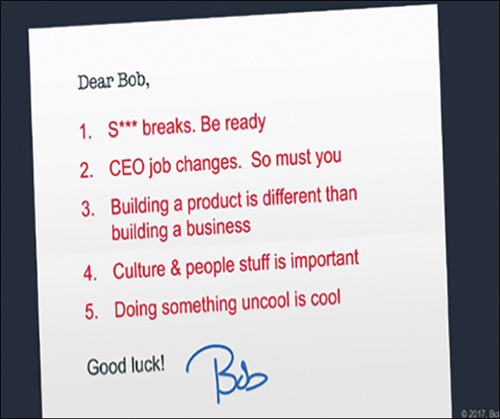- Point of View
- Audience Advocacy
- What's In It For You
- Quantify the “You”
- The “You” Rule
▪ What’s In It For You ▪
To identify the correct benefits, pose the rhetorical question “What’s in it for you?”—a variation of the common axiom “What’s in it for me?” The shift in the ultimate word to “you” is deliberate. “You” identifies the correct recipient of the benefit, shifting the focus from you to your audience.
Marilyn, not Wes.
If you search the web for “persuasive words,” you’ll find millions of results. Many of them refer to a Yale University study that ranked the 12 most persuasive words in the English language. “You” leads the list. The study has never been substantiated by Yale but, like so many other urban myths on the internet, this one has taken on a life of its own.
“What’s in it for you?” is also expressed by its acronym, WIIFY®, pronounced “whiffy.”
WIIFY Prompts
In my coaching sessions, when I hear presenters make a statement or provide a detail without a clear audience benefit, I interrupt and ask them to start the following sentence:
This is important to you because…
And then to finish it with a WIIFY. Or I ask them to pose the following rhetorical question:
What does this mean to you?
And answer it with a WIIFY. Or to pose this rhetorical question:
Why am I telling you this?
And answer it with a WIIFY. Or this rhetorical question:
Why should you care?
And answer it with a WIIFY. Sometimes, after I’ve interrupted several times, I simply say:
And…?
In each case, my prompt produces a WIIFY and, more often than not, a sly smile.
WIIFY Examples
When a CEO delivers an IPO roadshow for potential investors, one WIIFY could be:
Our unique operating efficiencies produce attractive margins.
When a corporate headhunter makes a job offer to a sought-after young recruit, one WIIFY could be:
Our company offers great pay, fascinating challenges, and many opportunities for advancement.
When a partner in a marketing consulting firm makes a new business proposal to the CMO of a prospective new client, one WIIFY could be:
Our expertise can help implement your promotional plans and increase your market share.
WIIFY in Action
When Jim Bixby was the CEO of Brooktree—a company that made and sold custom-designed integrated circuits (ICs) used by electronics manufacturers—he engaged my services to help prepare the company’s IPO roadshow. In one of our rehearsal sessions, I played the role of a money manager at Fidelity. During the product portion of his presentation, Jim held up a large, thick, bound manual, looked at me, and said, “This is our product catalog. No other company in the industry has as many custom ICs in its catalog as we do in ours.”
Jim set down the catalog and was about to move on to the next topic when I raised my hand and used one of the WIIFY prompts above, “Why should I care about the size of your catalog?”
Jim smiled, held up the catalog again, and replied, “With this depth of product, we protect our revenue stream against cyclical variations.”5
The first benefit, the largest catalog, was a customer benefit. Customers want selection, investors want protection. “Protect our revenue stream” is an investor benefit.
Customize every WIIFY for every audience.
No one knows what investors want more than Lise Buyer who, with her partner Leslie Pfrang, are the principals of Class V Group. After successful individual careers spanning institutional investing, investment banking, venture capital, IPO project management, securities law, and accounting at such large firms as Deutsche Bank, T. Rowe Price, Credit Suisse, and Google, the two women decided to join forces and start their own firm. Class V Group was born with the exclusive focus on the IPO market, to advise companies on how to navigate the complex process of going public, from hiring the right bankers, to crafting the S-1, to meeting the right investors at the right time with the right story.
Those last three words are where our paths crossed. I’ve had the pleasure and privilege of working with Lise and Leslie to help companies make the transition from pitching customers to pitching investors.
On one such occasion in Silicon Valley, Lise and I were working with the CEO and CFO of a technology software company to develop their IPO roadshow. As she had many times before, Lise heard me prompt the CEO in much the same way I prompted Jim Bixby, to identify the WIIFYs of his potential investor audience. With little hesitation, the CEO quickly identified the two essential WIIFYs for all investors: a return on their investment (ROI) and at low risk. The classic risk/reward ratio. In more primal terms, fear and greed. WIIFYs must allay the fear of risk and stimulate the potential of the return.
Then I asked the team if they had any more WIIFYs. The CFO said, “Synergy!” and then she continued, “Investors usually hold shares of many different companies in their portfolio. Some of those portfolio companies may be our customers or partners. Our success could bring success for their portfolio companies.”
“Super WIIFY!” I said. “Any more?”
Together the CEO and CFO fired off others: “large and growing market,” “high margins,” “low cost of operations,” “recurring revenues”…
“Those are all great,” I said. “They’re all variations of risk/reward. Any others?”
The two executives had run dry. They searched their minds in silence.
Lise could no longer be still. With a sly smile, she said drolly, “If those investors were early advocates, they get to talk about it over a high-end Pinot at the Village Pub!”6
The Village Pub is the popular watering hole for VCs and investment bankers in Silicon Valley. Lise’s extra WIIFY was the undeniable guilty pleasure of bragging rights.
I also told the Brooktree story to Bob Tinker. At the time, Bob was the CEO of MobileIron, a fast-growing startup that provided security and management for mobile phones. We were working together to develop MobileIron’s IPO roadshow. In the years of building his company from scratch, Bob had made countless pitches to customers about customer benefits and the importance of mobility. In the sessions with me, he recognized that he had understood the WIIFY for his customer audience, but as it is for a lot of founders, it was almost subconscious.
Now, getting ready for the IPO roadshow, Bob seized on the WIIFY construct. He realized that he needed to consciously create a WIIFY for a new audience for him—the public market investors. “The WIIFY created a major mindset change for me,” he said. “A little piece of my brain is now sitting in the audience’s chairs, constantly evaluating me, what I’m saying, and the content. Is it useful for them? Is it impactful to them? Is it worth their time?”
The value of WIIFYs stayed with Bob when, several years after MobileIron went public, he was invited to speak as part of the prestigious Entrepreneurial Thought Leaders (ETL) series at Stanford University. “Turned out that preparing for the ETL talk, for me, was more stressful than preparing for our IPO roadshow,” Bob revealed. “I was used to speaking about our market, our business, our product. The talk was about my journey, my learnings, and my mistakes. It was way more personal. How to be interesting? And not sound preachy? I was struggling.”
Bob said that the WIIFY was his breakthrough for the ETL talk. It dawned on him that, a decade before, he had been that young entrepreneur sitting in the audience. “Realizing that helped me frame the WIIFY,” Bob recounted. “Being a first-time entrepreneur is scary. I didn’t know what I didn’t know. I remembered that feeling. If I could go back in time to that first day as a first-time CEO, what would I tell myself?” Bob’s WIIFY became “Letter to Myself: 5 Things” (see Figure 2.1).

Figure 2-1 Bob Tinker’s Presentation to the Stanford University ETL
Bob continued, “The WIIFY was more than just the idea. It became the construct for the entire talk. It created meaning. It became the filter for what would be useful for the audience. And it naturally became much more personal for me and for the audience”7 (see Figure 2.2).

Figure 2-2 Bob Tinker’s Presentation to the Stanford University ETL
Bob’s letter to himself was a business variation of a tradition among modern U.S. presidents: to leave a letter for the incoming commander in chief on Inauguration Day.8
As a result of Bob’s one good turn for the students, Bob became the beneficiary of another good turn, a WIIFY, for himself: He expanded the content of his talk into two successful books, Survival to Thrival: Building the Enterprise Startup and Change or Be Changed.
WIIFYs work for people of all ages.
14-year-old Cade Collins of Maryville, Tennessee, wanted a black Labrador puppy his relatives had offered him, but he knew that his mom and dad would be resistant. Cade decided to try to persuade them with a slide presentation. A New York Times article about kids who deliver presentations to their parents described Cade’s pitch, complete with the boy’s unique spelling and impressive WIIFY:
I’ve heard it from you mom, “We would but there is just too much stress with moving houses.” Well, boy do I have an answer for you. Studies have shown that when petting a dog your body releases a number of “feel good” hormones, such as serotonin, prolactin and oxytocin. There for releasing stress.”
The article concluded:
“What did Mr. and Ms. Collins say? What do you think?”9
Whether your audience is composed of parents, students, investors, customers, partners, or managers, do as Bob Tinker did: sit in their chairs, think as they think, and give them WIIFYs.
You may say, as many of my clients do, “Isn’t the benefit obvious? Won’t my audiences get it themselves?” Yes, they may, but why take a chance? Connect the dots for them, give them a reason to move from Point A to Point B. That’s Aristotle’s pathos, and that’s what produces persuasion.
There’s an old adage: “You can never be too thin or too rich.” I amend that with: “…or offer too many WIIFYs.”
